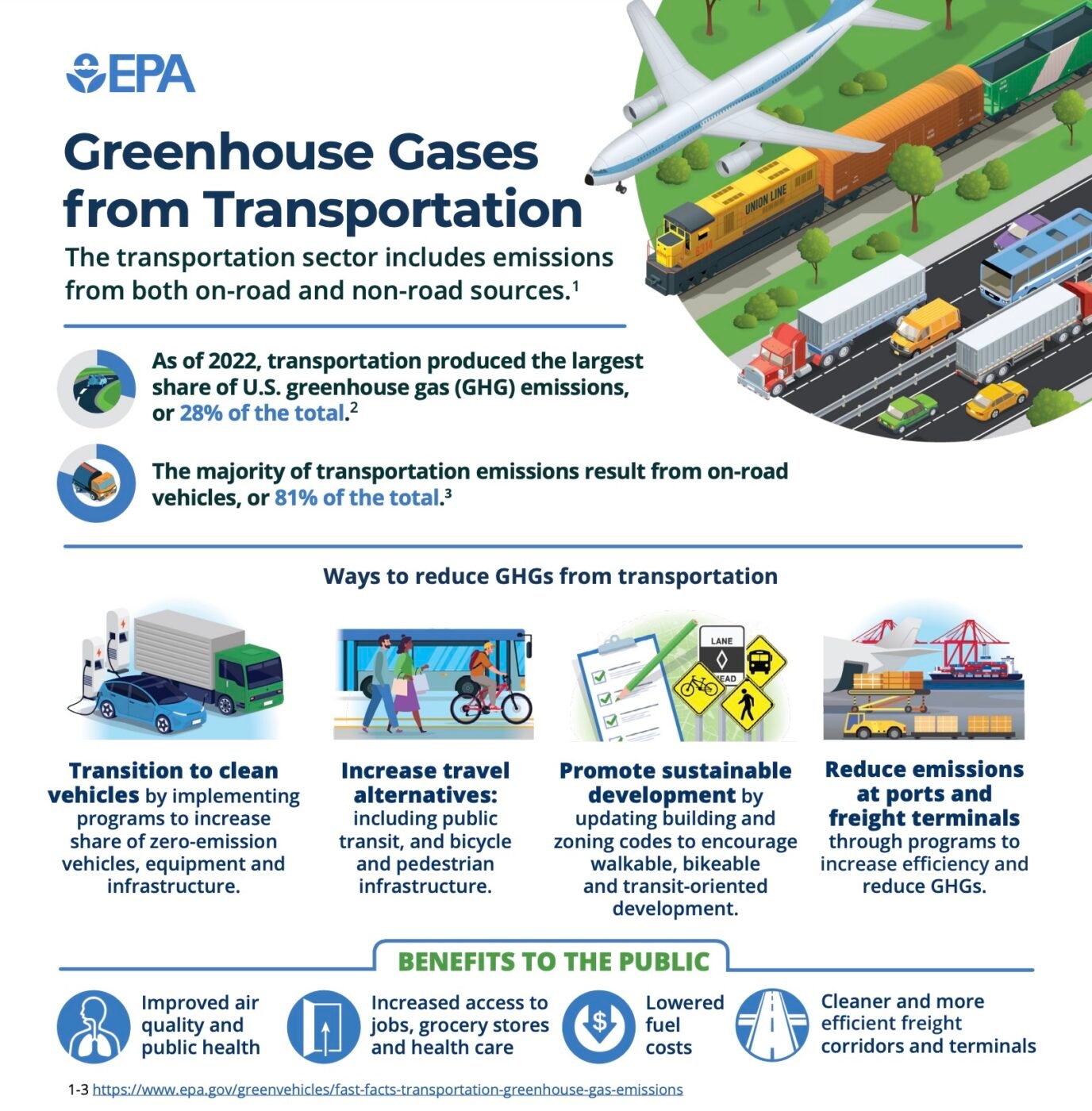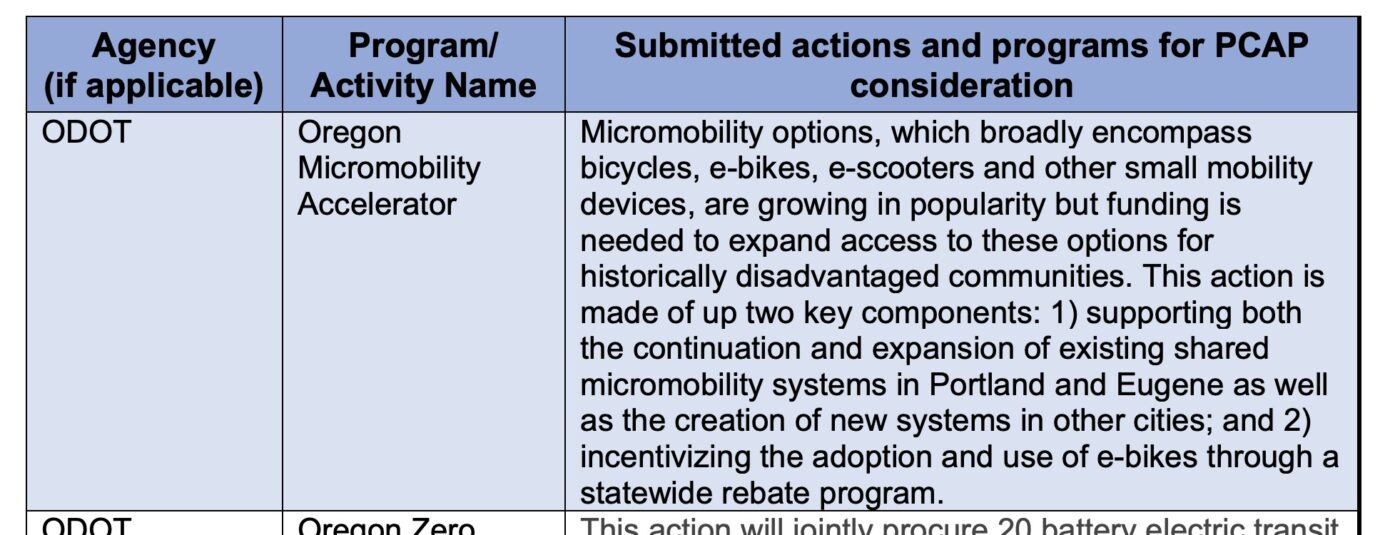The State of Oregon has received a $197 million grant from the federal government to reduce greenhouse gas emissions. According to the Oregon Department of Environmental Quality, all the funds devoted to the transportation sector — which is Oregon’s largest source of GHG emissions — will be spent to help people purchase and drive electric cars.
Oregon’s award is part of over $4.3 billion given out through the Biden Administration’s Climate Pollution Reduction Grants Program administered by the Environmental Protection Agency.
As I clicked through the press release from Governor Tina Kotek’s office and the supportive material about the grant, I was surprised to see that all the funds awarded to Oregon will be spent on cars. Regardless of how they are powered, state subsidies for cars will increase vehicle miles traveled (VMT), lock more Oregonians into lopsided financial relationships with banks and major corporations who benefit from people who use the most expensive transportation option available, cause more deaths and injuries on our roads, create more traffic bottlenecks, clog neighborhoods with parked cars, and perpetuate highway building and expansions.


The $197 million will be split into three sectors of spending: residential and commercial buildings, materials and waste, and transportation. Of the $66 million going to transportation, $52 million will go toward e-car rebates and $14 million will be spent on charging infrastructure.
Getting fossil fuel powered vehicles off the road and helping people with lower incomes is important, but the lack of balance in Oregon’s funding plans is striking.
Several other states and local governments across the country who received funding from this same grant program spread the money around and will make bicycling and transit investments.
Austin plans to expand transit and invest in, “expansion of the local electric bikeshare system and micromobility choices.” Austin will also use the money to, “construct large-scale bicycle storage at 16 mobility hubs,” and “reduce vehicle-miles-traveled and increase equity by improving transit and mobility infrastructure in low-income and disadvantaged communities.” New Orleans plans to spend their funding on, “transportation access for disadvantaged communities… via 148 new bike share stations, 2,500 new bikeshare e-bikes, and incentives for 3,000 new e-bikes for residents.” Northwest Arkansas will, “construct bicycle and pedestrian trails to improve electric bike access, including vouchers reserved for income-qualified applicants.” The Nez Perce Tribe will, “create a fleet of e-bikes for staff at field facilities,” and Utah plans to, “Deploy up 2,000 electric bikes with a focus on low-income communities.”
It’s not as if Oregon didn’t know people wanted this money to go toward VMT reduction and things that would promote more bicycling and transit. Below is an excerpt from a feedback summary on the transportation sector shared in the Oregon DEQ Priority Climate Action Plan (the EPA-funded planning document required as part of the grant application):
Reduction of vehicle miles traveled was also a theme throughout the transportation feedback. Suggested actions included the promotion of biking, walking, and public transit through increasing safety, infrastructure, and rebates on micro mobility devices such as electric bicycles. Longer term actions included designing communities to encourage driving reductions.
The State of Oregon also asked Native American Tribe members what they wanted this money to be spent on. According to a table on page 16 of the Priority Climate Action Plan, the “priority tribal measures” included:
- Transit improvements, clean diesel, and bus electrification.
- Increase the number of electric vehicles, gas electric hybrid automobiles, and fuel-efficient vehicles in the tribe’s fleet.
- Expand electric vehicle charging infrastructure for government operations and employees.
- Increase use and fleet of available eBikes Improve public transit service and infrastructure.
- Non-motorized Transportation: Walking and biking trails and safety infrastructure.
And State of Oregon agency staff who worked on the Priority Climate Action Plan suggested funding for a program called, “Oregon Micromobility Accelerator” that would promote things like bicycling, e-bikes, e-scooters and other small mobility devices.” The program would have provided financial support for bike and scooter share systems in Portland and Eugene as well as a statewide e-bike rebate program. Unfortunately those micromobility investments, which are backed up by a 2023 ODOT report that recommended more investment in e-bikes and scooters, did not make the final priority list. And despite having e-car rebates in place for many years, the Oregon Legislature failed to pass a similar program for bikes last year.
This grant award reflects the consequence of concerns we raised in 2021 that Oregon’s transportation electrification plans tend to marginalize and/or dismiss electric bicycles. Accompanying this systemic issue in Salem is the fact that Oregon has a statewide nonprofit electric vehicle advocacy group, Forth, that is almost wholly focused on electric cars and car charging infrastructure.
While there are many other funding sources and grants for transportation that do (and will) include non-driving investments, the way Oregon has chosen to invest this grant illustrates the continued primacy of car-centric planning at state agencies and continues our imbalanced approach to climate change mitigation and transportation electrification.




